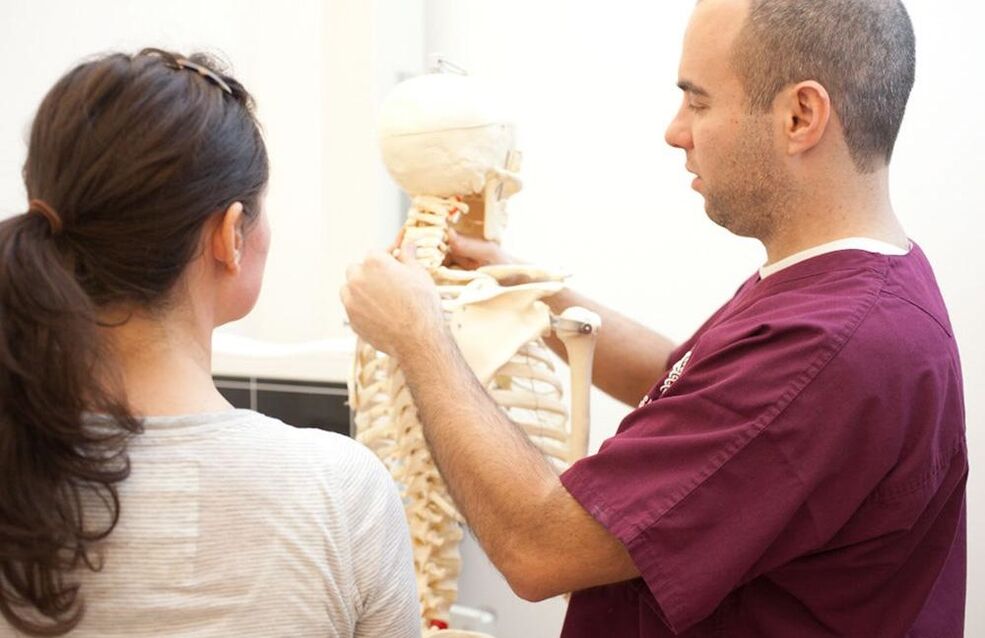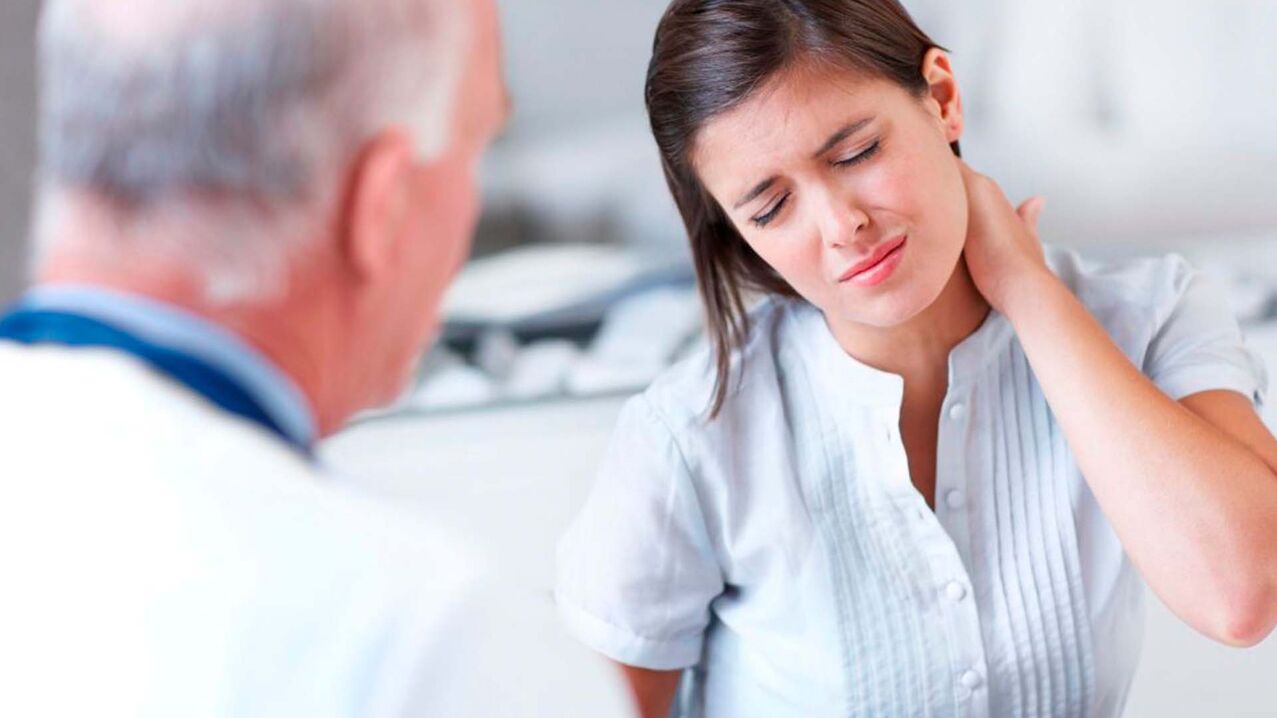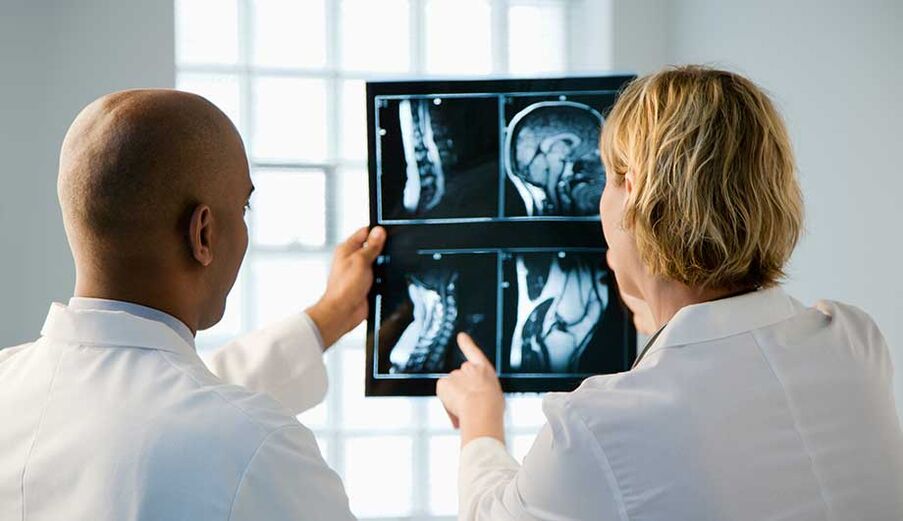
In the article, we will look at the symptoms and treatment of cervical spondylosis. What disease is this? How does it manifest itself?
Osteochondrosis is the most common real disease in the world. Many people after the age of 30 suffer from this disease in many different forms. There is also a tendency to rejuvenate the disease, that is, to lower the age threshold. This may be because more and more people are now mostly working, where a person spends most of their time sitting and leads a sedentary lifestyle. By the way, such a dangerous disease, and each person must know what cervical fibroids are, how they manifest, how to treat and how to be able to identify its symptoms.

The main cause of the onset of the disease
A person is designed in such a way that the vertical position of the spine can lead to the fact that the vertebrae will be squeezed more and more over time, thereby causing the bone and cartilage tissue to gradually degenerate anddeformation.
The spine always begins with the cervical region, where there are seven vertebrae. This is a particularly vulnerable part, because there is an increase in mobility in this area. Such a disease of the cervical spine is reflected, first of all, on the intervertebral discs, because they are a weak point of the spine.
The frequency of degenerative disc disease of the cervical region is supported by factors such as the small size of the vertebrae and the relative weakness of the neck muscles. In addition, the poor blood supply to the cartilage tissues will affect the development of the disease. What does all this mean?
Judging by this, the development of this disease appears to be a long and complex process, the cause of which is difficult to discern. Although a link has been found between a sedentary lifestyle and osteonecrosis of the cervical spine, a similar condition is often seen in trained individuals, especially athletes. , due to the fact that they have to increase the load on the cervical spine. They lift different weights (barbells, barbells) resulting in disc deformity. So everything needs a measure.

As a rule, in the elderly and elderly, such degeneration of vertebral structures is an inevitable process, therefore it is associated with the aging of the body and the weakening of its defenses. guard. But there can also be a pathological type of cervical osteosarcoma, the symptoms of which appear due to negative internal or external factors. Including:
- various back injuries;
- rachiocampsis;
- heavy weight;
- incorrect posture;
- arrhythmia;
- hard physical labor;
- metabolic processes are disturbed;
- Hypothermia;
- overwork, stress;
- Infectious Diseases;
- heredity;
- congenital pathologies or special features of the body structure.
Stages of cervical spondylosis
The disease has four stages. According to the general analysis, it is sometimes difficult to determine what stage a patient is in, as often the degree of bone tissue deterioration may not coincide with the symptoms observed in the patient.
Early stage of the disease
At this stage, destructive actions have taken place in the vertebrae. But the symptoms of cervical osteonecrosis are not very clear. People may not notice them or associate these signs with a disease of the spine, calling it stress or trivial overwork.
Second stage of the disease
As noted, the symptoms and treatment of cervical osteochondrosis are closely related.
At this stage, the disc thins out considerably and cracks appear on the surface of the disc. Symptoms of cervical fibroids at this stage are constant pain, facial numbness, weakness.

The third stage
What are the symptoms of cervical spondylosis at this stage? When a herniated disc occurs, the vessels and muscles of the cervix are affected. The patient notices dizziness and pain in the back of the head.
The fourth stage of the disease
With cervical osteochondrosis, osteonecrosis often occurs - the proliferation of bone tissue that protects the vertebrae from stress, which in turn leads to nerve compression. This is characterized by stiffness of motion and damage to adjacent joints.
Signs of cervical osteonecrosis
The main symptoms of cervical osteochondrosis are:
- Sharp pain in the shoulder and neck.
- Weakened muscles.
- Increased sweating.
- Reduced coordination.
- Hand is numb.
- Dizzy.
- Hypertension.
- Loss of hearing and vision.
- Headache.
Frequent symptoms of cervical osteonecrosis can manifest themselves in all stages of the disease. In most cases, only some of the markings on this list will be visible, while the rest may be completely absent. Patients who encounter them for the first time practically do not diagnose cervical osteonecrosis. In this case, he can turn to different doctors - a cardiologist, a neurosurgeon, a therapist, a surgeon. And a reliable diagnosis can eventually be determined with a considerable delay.
Disease risk
Not everyone knows the symptoms and treatment of cervical fibroids.
The most initial symptoms of osteonecrosis can appear as early as 20 years, while pain and discomfort are mild, so many people decide to wait, hoping the symptoms will pass. , postpone the doctor's visit and not start treatment. Symptoms in the early stages of osteonecrosis can actually go away on their own, but the disease will not go away from a person. If prevention and treatment are not carried out, osteonecrosis begins to develop further and this can be dangerous to human health.

What are the dangers of cervical spondylosis?
In the early stages, the symptoms are mild, so most people do not take the disease too seriously. But if the patient does not initiate treatment at the onset of development, this can lead to dangerous, serious complications. The consequence of a neglected phase is a person's inability to perform his or her functions. This can often be accompanied by lesions in adjacent departments. Such neglected osteonecrosis will lead to very dangerous consequences, followed by disability.
In addition, it is possible to develop:
- disc bulging;
- protrusion and herniated disc;
- disk loss;
- low back pain or sciatica;
- spinoses of the spinal canal.
In special cases, the diseases mentioned above require surgical intervention, resulting in severe disability.
The problems listed above are characteristic of osteonecrosis of the cervical spine.
Complications of the disease
The danger of the disease lies in the fact that the cervical region is connected to the vessels that supply blood to the brain. The consequences of cervical spondylosis are sleep disturbances, migraine headaches, vision problems, and dizziness. With an advanced disease, the symptoms listed will become more noticeable. With cervical osteonecrosis, there is the potential for concurrent problems:

- high or low blood pressure and vascular dystonia;
- thyroid disease;
- vestibular disorders;
- hypertension or hypotension;
- The hit;
- spondylitis;
- periosteal necrosis disease.
Diagnosis of diseases of the cervical spine
Symptoms and treatment of cervical spondylosis are of great interest to many people.
For an accurate diagnosis, you must consult a specialist. He will make referrals to other specialists - neurologists, chiropractors, orthopedists.
To diagnose the disease, the following types of studies are attached:
- Computerized tomography;
- X-ray;
- Magnetic resonance imaging;
- Doppler scan.
X-rays show the presence of growth, displacement of the vertebrae, salt and bone deposition, and intervertebral discs. With the help of computed tomography, you can get a pretty rich idea of the organs, in this case the cervical spine. It will allow to describe in detail the stage of the pathological process, as well as the nature of nerve clamping, the height of the intervertebral disc and the structure of the osteoblasts. Magnetic resonance imaging provides more detailed images of the structure of the spine. An ultrasound can help determine how the blood flow in the great vessels of the neck has changed as a result of the disease.

Treat this disease
Symptoms and treatment of cervical spondylosis are related.
In order for a person to be able to fight diseases, medicine has developed many methods. There are also therapies you can use at home. But the procedure is lengthy and full recovery is unlikely, especially in old age. But it should also be noted that it is possible to prevent and slow down pathological processes in the spine at any stage of the disease.
In the early stages of the disease, the treatments for cervical spondylosis are mostly conservative. Several methods can be used for therapy:
- physical therapy;
- medicine;
- Massage;
- physical therapy;
- special devices to immobilize the spine.
If such a disease has progressed to an extreme stage, and at the same time the osteolytic structure of the spine is destroyed, surgical intervention is recommended to cure cervical fibroids.
Medicines to treat diseases
Medicines needed to treat osteonecrosis of the cervical spine:
- analgesic;
- vitamin;
- chondroprotectors;
- anti-inflammatory drugs;
- antispasmodics.
When an acute pain syndrome occurs, which is associated with osteonecrosis, the most important task is to remove it. In such cases, oral analgesics are used, but if their effects are not noticeable, a novocaine blocker can be used.
The symptoms and treatment of cervical osteochondrosis are often controversial for many people.
Antispasmodics are usually taken. Muscle relaxants show the greatest effectiveness in bone resorption. As a pain reliever and anti-inflammatory, you can use ointments containing non-steroidal drugs.
If there are signs associated with impaired blood supply to the brain and vertebral artery syndrome, it is necessary to use drugs that eliminate their unpleasant manifestations - hypotensive and nootropic drugs.
Symptoms and treatment of cervical spondylosis are no longer a secret.

Physiotherapy exercises
Physiotherapy is the simplest and most accessible type of therapy and prevention of cervical osteochondrosis, and is also quite effective. Physical therapy can also be done at home. With cervical osteonecrosis, the saturation of the layers does not play a big role, just their regularity. First of all, physical education is designed to strengthen the muscles of the neck, the task of which is to compensate for the lack of function of the spine and help support weakened vertebrae. Treatment of cervical spondylosis should be regular.
Daily exercise is necessary to strengthen muscles. Such exercises can be very simple, involving turning and tilting the head in different directions, and quite complex, involving the hands to assist the cervical muscles. They can be done both at home and at work. For example, if you have to work all the time while sitting, it will be helpful to do different exercises every hour sitting at a desk and a screen. But only when there is no exacerbation of the disease and no pain syndrome. Otherwise, these same exercises may only make the condition worse.
It is also effective in the treatment of cervical spondylosis by strengthening the shoulder muscles, for example using light weights during regular exercises. However, lifting weights such as kettlebells or barbells is contraindicated. Regular swimming activities can be helpful, as it reduces stress on the spine.
We examined the symptoms and treatment of osteonecrosis of the cervical spine.














































